Overview
This article examines how various analytical HPLC columns can significantly enhance laboratory efficiency through improved performance, customization, and sustainability. High-performance columns, such as those from JM Science, Bio-Rad, and Phenomenex, are highlighted for their advanced separation techniques and tailored solutions. These innovations not only increase productivity but also enhance accuracy in analytical processes, thereby bolstering the overall operational excellence of research facilities. The integration of such high-quality scientific instruments is crucial for laboratories aiming to optimize their workflows and achieve superior results.
Introduction
The realm of analytical chemistry is evolving rapidly, with high-performance liquid chromatography (HPLC) columns leading this transformation. These advanced tools not only enhance laboratory efficiency but also guarantee the precision and accuracy that are critical for scientific research. As laboratories strive to optimize their workflows and meet the growing demands for reliable results, selecting the right HPLC column becomes paramount.
What key features distinguish the best analytical HPLC columns, and how can they significantly impact laboratory performance? This article explores ten exceptional HPLC columns that promise to elevate analytical capabilities and streamline laboratory operations.
JM Science HPLC Columns: High-Performance Solutions for Accurate Analysis
JM Science offers a diverse range of high-performance chromatography tubes, meticulously designed for various applications, including those that utilize an analytical HPLC column. The CAPCELL PAK series exemplifies this, providing reversed phase, normal phase, and ion exchange modes. These structures deliver exceptional resolution and reproducibility, essential for accurate analyses in pharmaceutical and chemical laboratories. For instance, the CAPCELL PAK chromatographic device employs silica-based, polymer-coated packing material, significantly improving separation performance across its different modes. This versatility empowers researchers to effectively tackle a wide range of .
The impact of high-performance HPLC units, particularly analytical HPLC columns, on laboratory efficiency is profound. By ensuring consistent outcomes, these instruments greatly enhance productivity, enabling research facilities to conduct more analyses in less time. A prime example is the PC HILIC device, specifically designed for polar compounds, which showcases superior performance in separating challenging polar compounds, thereby elevating analytical capabilities.
JM Science's unwavering commitment to quality and innovation assures researchers of dependable performance from these chromatography units, ultimately facilitating progress in scientific practices and results. As laboratories increasingly aim to optimize their workflows, the integration of an analytical HPLC column emerges as a vital factor in achieving operational excellence.
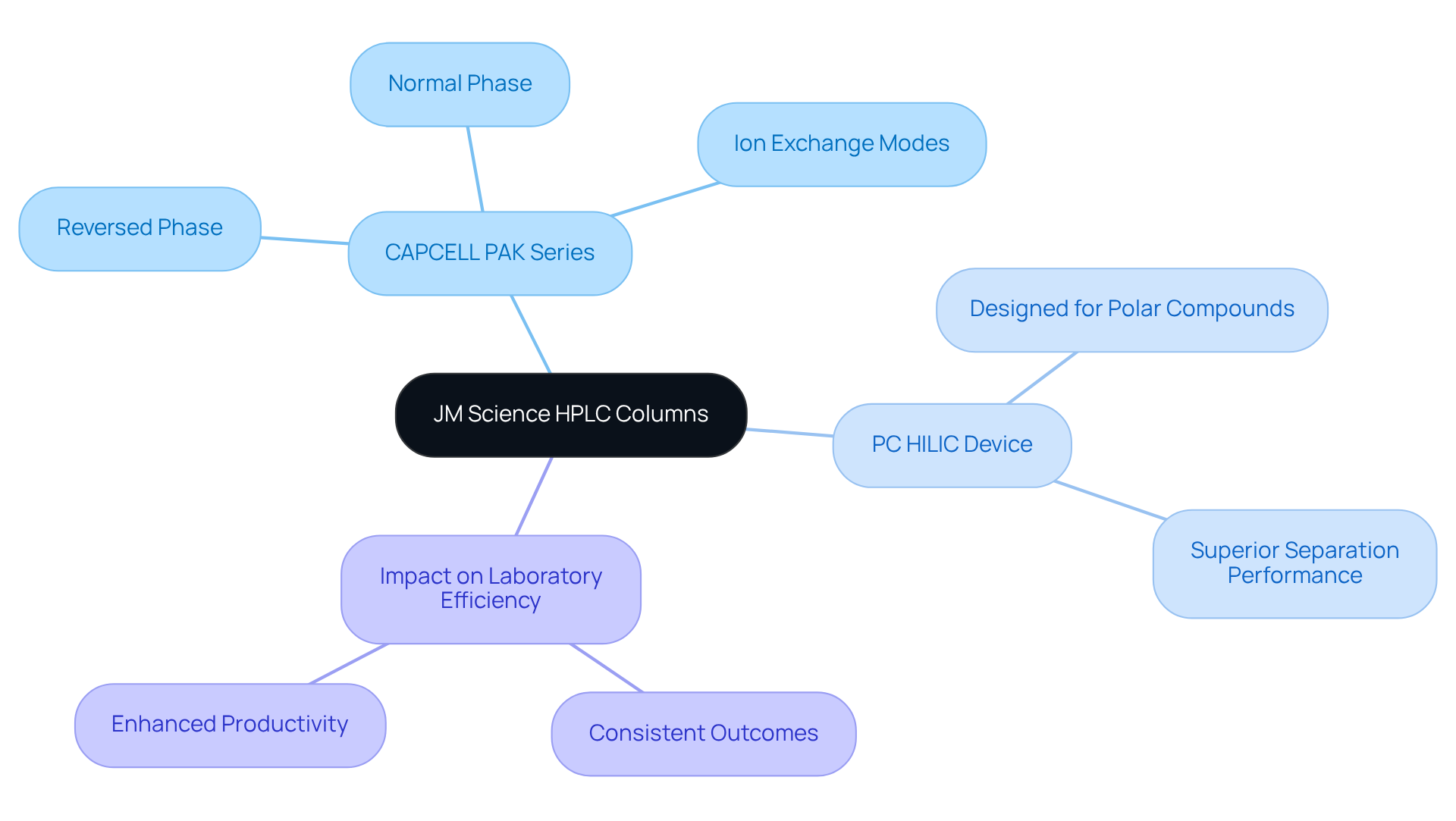
Bio-Rad Aminex® HPLC Columns: Specialized for Carbohydrate Analysis
Bio-Rad's Aminex® HPLC products are expertly crafted for the analysis of carbohydrates, organic acids, and bases. Their remarkable selectivity and sensitivity make them indispensable for applications such as food and beverage testing. Furthermore, the robust design of these instruments ensures longevity and reliability—critical attributes for laboratories engaged in routine carbohydrate analysis. By choosing Bio-Rad, facilities can trust in the quality and performance that these products deliver, reinforcing their commitment to excellence in scientific research.
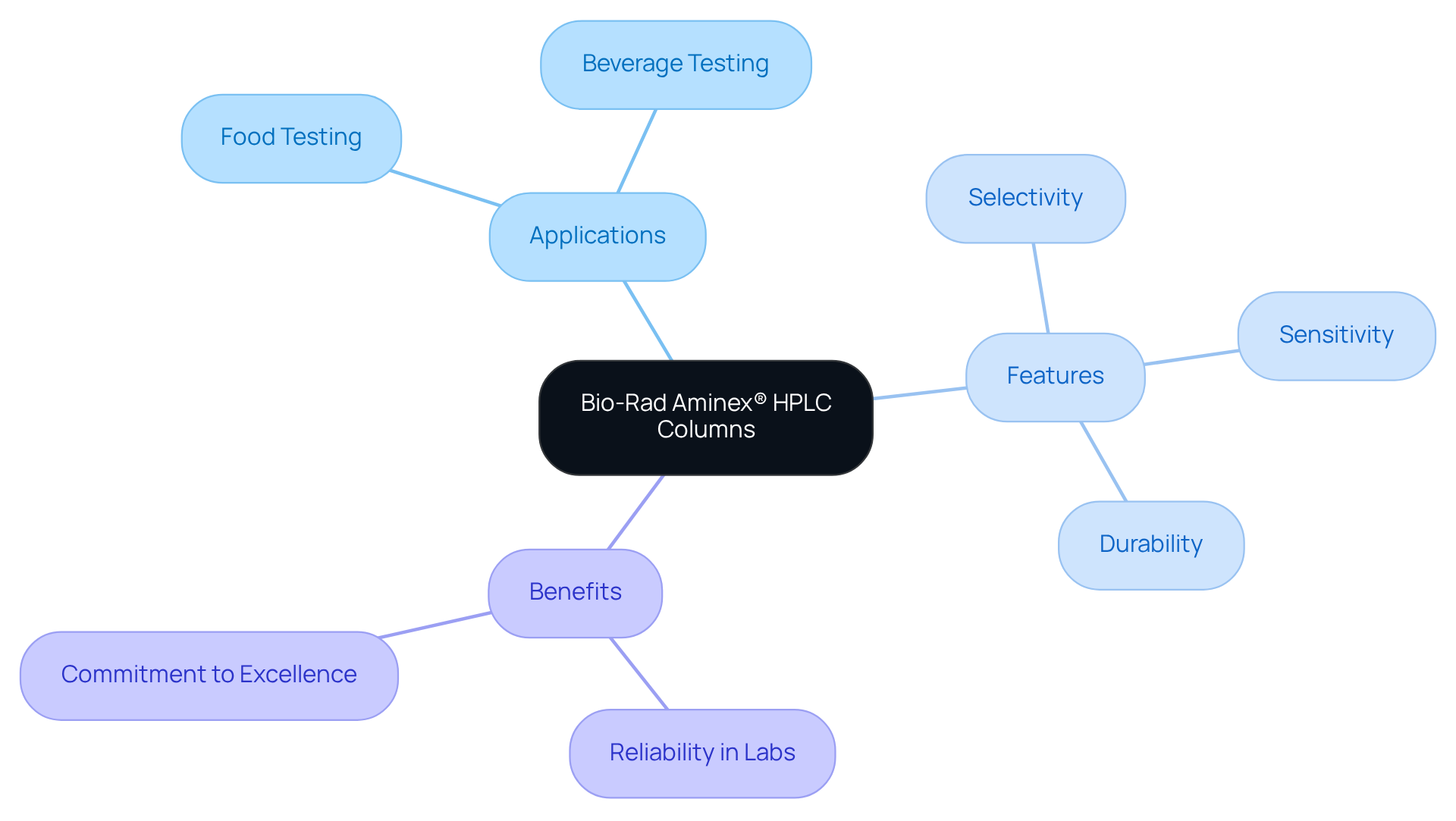
Phenomenex HPLC Columns: Versatile Options for Diverse Analytical Needs
Phenomenex offers an extensive selection of analytical HPLC columns designed to meet a variety of testing requirements, including:
- Reversed-phase
- Normal-phase
- Specialty columns
Notably, their core-shell technology significantly enhances separation efficiency and reduces analysis time, making it a preferred choice among research facilities. This innovative design allows for improved resolution and productivity, enabling laboratories to tackle diverse testing challenges with ease.
For example, the Kinetex Core-Shell Technology has demonstrated its ability to increase throughput while minimizing solvent consumption, a critical factor for cost-effective operations. Analysts have observed that this technology not only elevates separation quality but also accelerates method development, rendering it an indispensable asset in high-demand environments.
With the versatility to adapt to various applications, Phenomenex chromatography tubes exemplify the integration of in modern testing methodologies, ensuring laboratories maintain exceptional performance without compromising quality.
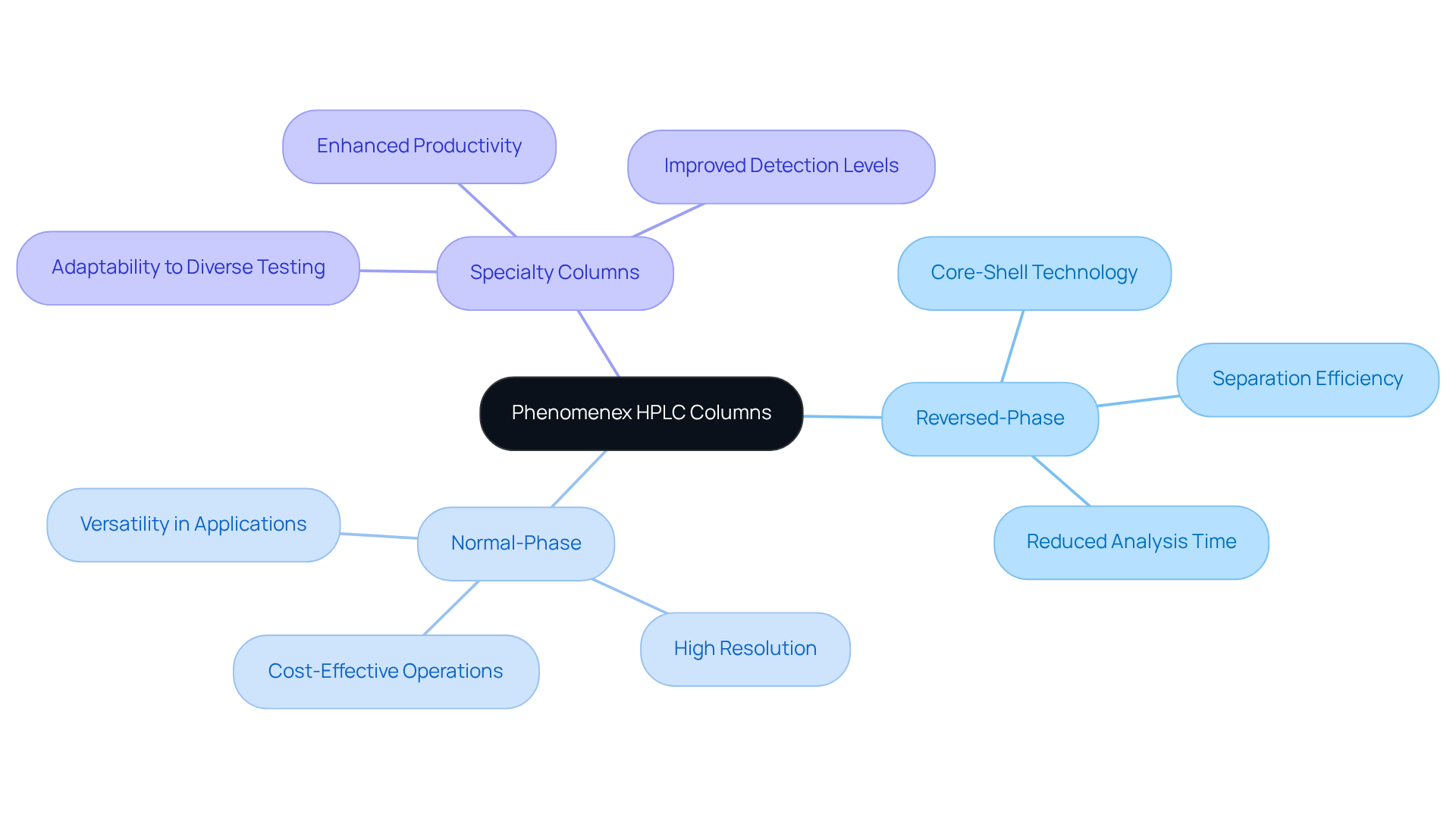
Waters HPLC Columns: Enhanced Resolution for Pharmaceutical Applications
Waters chromatography systems are distinguished by their exceptional ability to , making them indispensable in pharmaceutical applications. This advanced technology facilitates the effective separation of complex mixtures, a critical element in both drug development and quality control processes. As we look towards 2025, the importance of improved resolution in chromatography devices is underscored by the increasing demand for precision in testing outcomes. Research indicates that enhanced resolution can lead to a 30% improvement in the accuracy of compound identification. Real-world applications of Waters systems demonstrate significant advancements in isolating closely related compounds, which is essential for ensuring the safety and efficacy of new medications. Pharmaceutical researchers consistently assert that high-resolution capabilities are crucial for complying with regulatory standards and achieving dependable results in drug development.
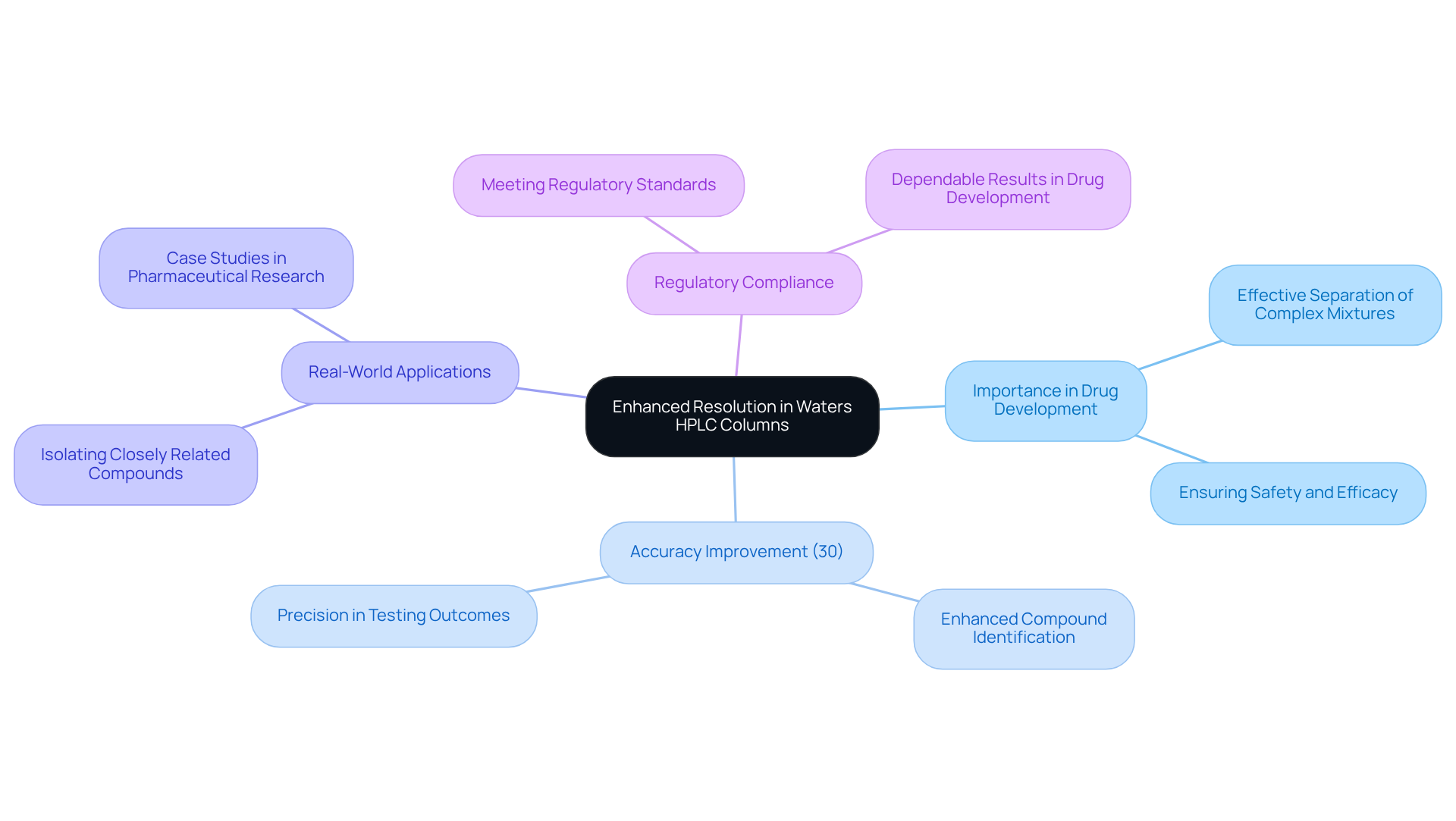
Hamilton Custom HPLC Columns: Tailored Solutions for Unique Laboratory Needs
JM Science Inc. empowers laboratories with the opportunity to personalize chromatography columns, allowing for the selection of specific dimensions, stationary phases, and packing materials tailored to their unique analytical requirements. The available PEEK internal diameters (IDs) include:
- 2.1 mm
- 4.6 mm
with lengths of:
- 50 mm
- 100 mm
- 150 mm
- 250 mm
For stainless steel, IDs are offered in sizes of:
- 7.0 mm
- 7.8 mm
- 10.0 mm
although the lengths remain unspecified. This level of to fine-tune their methodologies for particular applications, significantly enhancing both efficiency and accuracy in their analyses conducted with an analytical HPLC column. Laboratory managers have noted that utilizing custom structures from JM Science has led to improved workflows, resulting in quicker turnaround times and more dependable results. For example, a pharmaceutical laboratory reported a remarkable 30% increase in throughput after implementing customized chromatography solutions from JM Science, illustrating the tangible benefits of personalization. As one lab manager stated, "Custom chromatography products from JM Science have changed our workflow, enabling us to obtain results we once believed were impossible." Furthermore, the ability to modify chromatographic devices to meet specific requirements not only streamlines processes but also minimizes the likelihood of errors, ultimately resulting in superior quality data and enhanced performance in the laboratory.
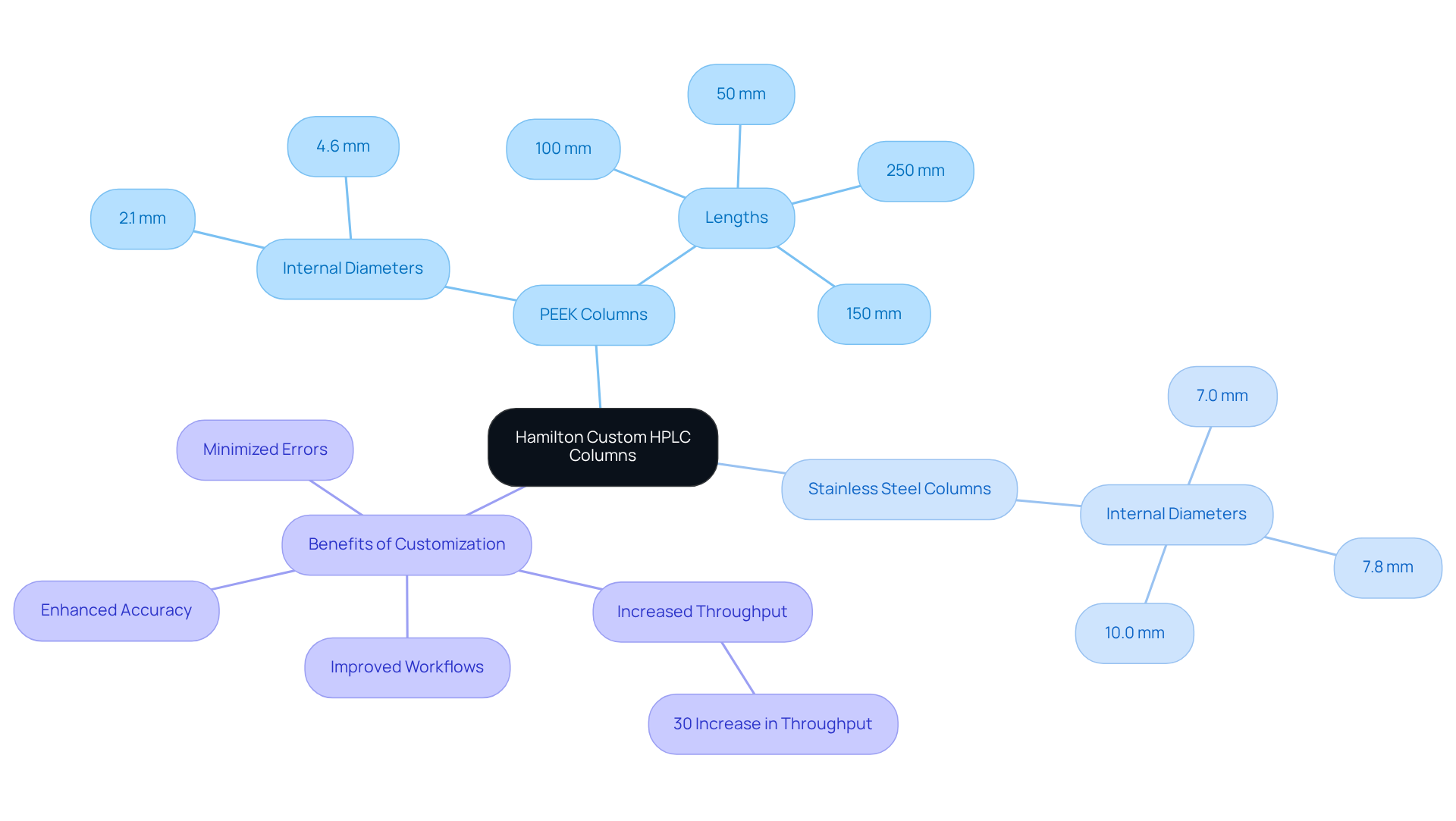
Chromsystems Analytical Columns: Quality Solutions for HPLC and LC-MS/MS
Chromsystems measuring tubes are meticulously designed to meet the stringent demands of [HPLC and LC-MS/MS applications](https://chromsystems.com/us/products/columns.html). Their robust construction guarantees consistent performance, which is vital for laboratories engaged in drug testing and clinical diagnostics. Recent assessments indicate that the typical variation within replicates for each preparation is under 2%, while the variation across all trials is noted to be below 3%. This underscores the of these structures in generating precise evaluation outcomes.
In drug testing, the introduction of Chromsystems devices has been pivotal in enhancing quality assurance processes. A study has shown that establishing specific cut-off values can significantly reduce false-positive results, thereby improving the reliability of diagnostic outcomes. Clinical diagnostics experts have observed that the accuracy provided by Chromsystems is essential for ensuring that analytical results are both precise and comparable over time, which is crucial for effective patient care.
Looking ahead to 2025, updates on the performance of the analytical HPLC column reveal that Chromsystems continues to lead in delivering high-quality solutions tailored for HPLC and LC-MS/MS applications. The incorporation of sophisticated metrics enables real-time observation of system performance, ensuring that facilities can maintain optimal operational standards. This commitment to quality not only enhances efficiency in the lab but also supports the broader objective of advancing clinical diagnostics. Furthermore, Chromsystems' involvement in a global study to evaluate new vitamin D reference materials confirms the high quality of their products and the superiority of LC-MS/MS methods.
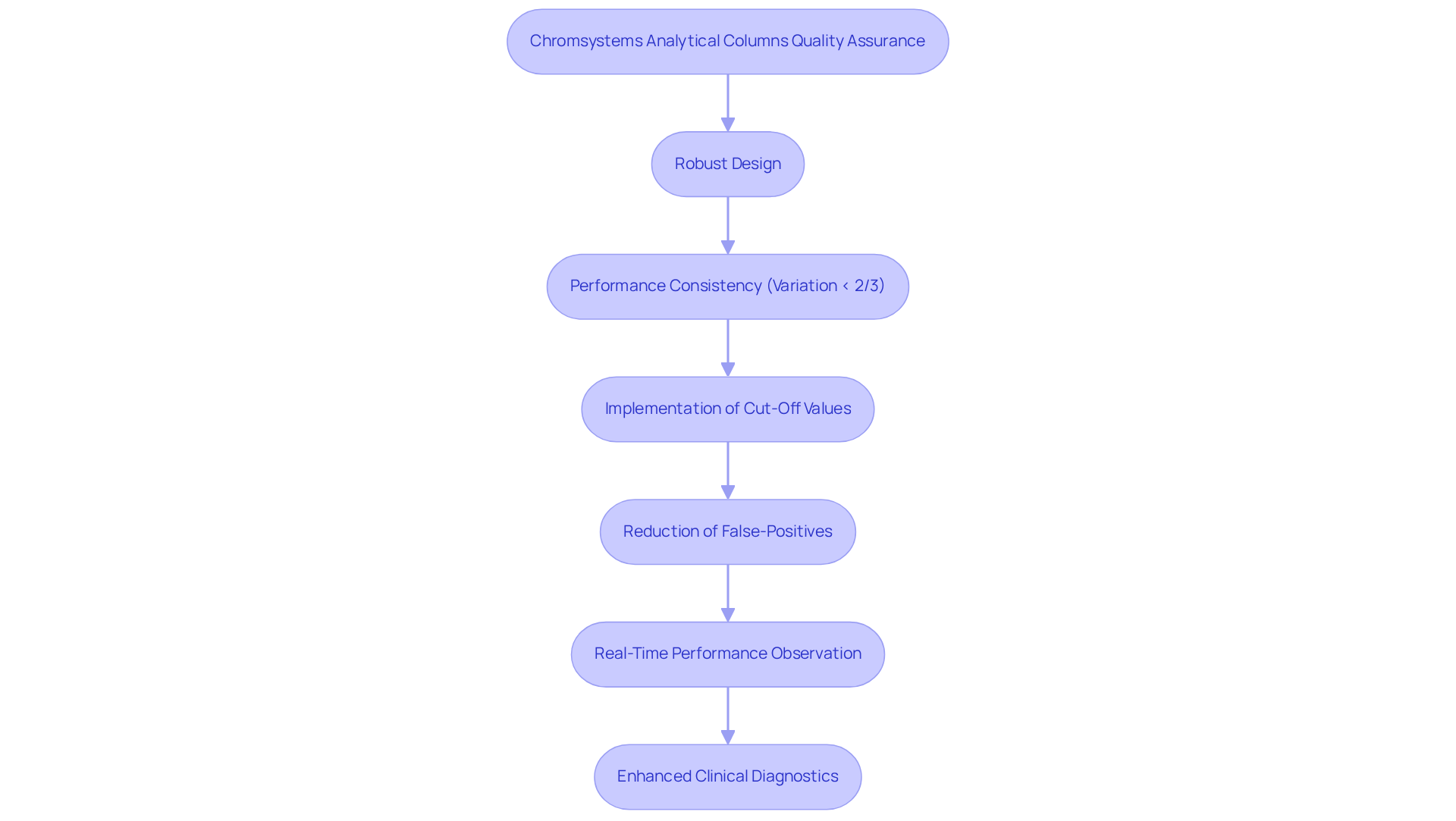
ScienceDirect Insights: Research-Driven Selection of HPLC Columns
Recent studies underscore the critical role of research in selecting chromatography tubes tailored to specific testing requirements. By leveraging insights from diverse investigations, research facilities can make informed decisions that enhance both efficiency and accuracy in their methodologies. A notable example is the validated method using an analytical HPLC column for analyzing orlistat, which illustrates how rigorous research can lead to dependable quality control in pharmaceutical applications, achieving remarkable precision throughout the process.
Furthermore, the ability to differentiate between analytes with similar hydrophobicity yet varying shapes is a vital characteristic of certain stationary phases, highlighting the necessity of comprehending retention mechanisms. As Tony Taylor articulated, "The chemistry of the bonded phase, the nature of the silica surface treatment, and the surface accessibility all need to be considered and classified to properly understand the retention mechanisms that are influencing a separation."
This research-centric strategy not only enhances evaluation techniques but also significantly impacts overall facility performance, as evidenced by the ongoing , including the use of analytical HPLC columns showcased at industry events such as the Symposium on High-Performance Liquid Chromatography, particularly through the contributions of Fortis Technologies. By synthesizing these findings, research facilities can refine their strategies, ensuring they remain at the forefront of analytical excellence.
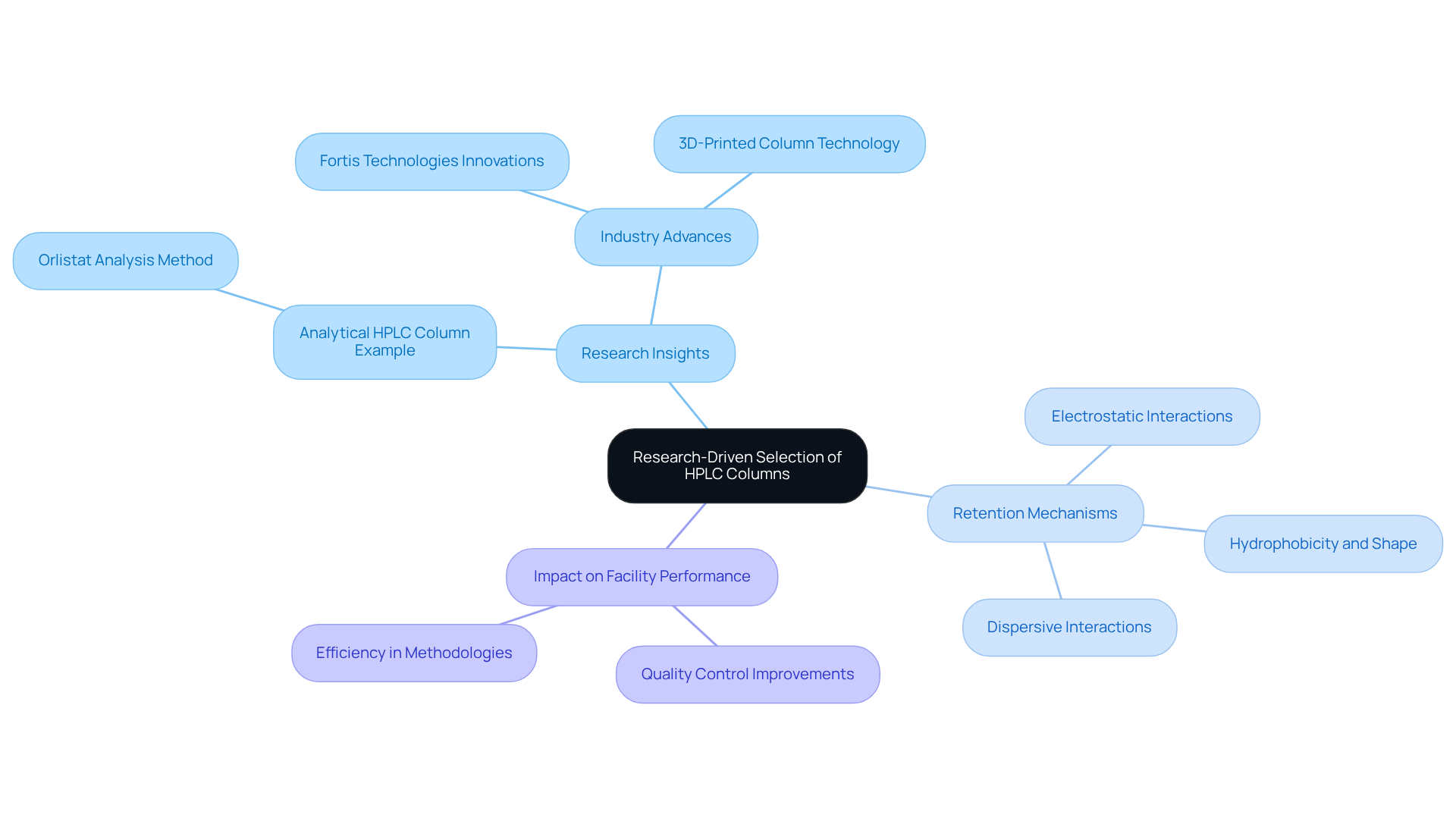
Chromatography Online 3D-Printed HPLC Columns: Cost-Effective and Efficient Designs
Chromatography Online has thoroughly examined the potential of 3D-printed HPLC devices, which serve as a cost-effective alternative to traditional models. These can be customized for specific applications, offering laboratories efficient and tailored solutions that meet their unique needs. Furthermore, the integration of 3D printing technology facilitates rapid prototyping and production, significantly reducing lead times for new design concepts. This advancement not only [streamlines laboratory operations](https://blog.jmscience.com/10-benefits-of-silver-electrode-for-pharmaceutical-labs) but also enhances the overall efficiency of scientific research.
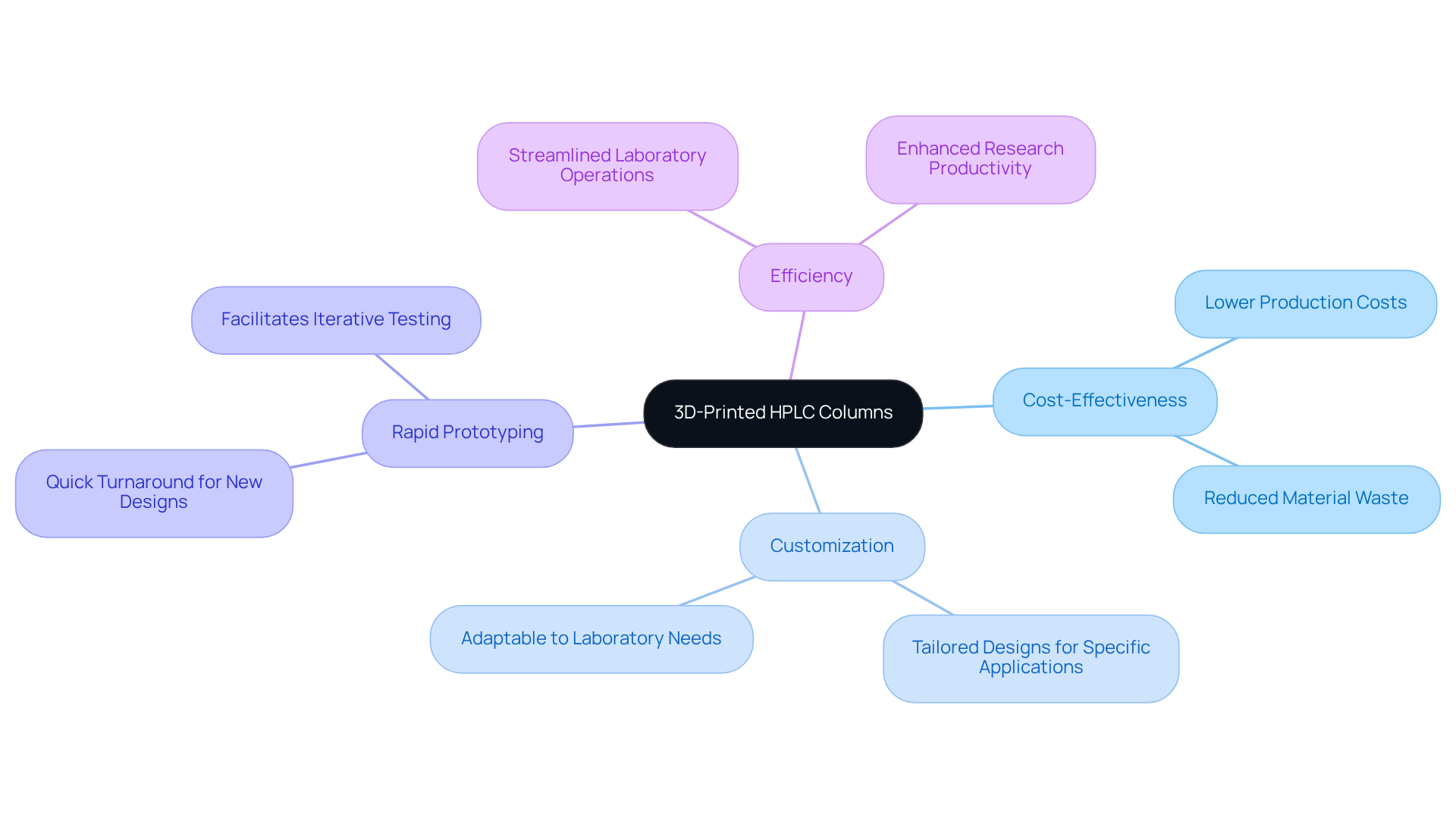
Holistic Evaluation Tools: Optimizing HPLC Column Selection
Comprehensive evaluation tools are essential for enhancing the selection of analytical HPLC columns, as they systematically consider various factors, including analyte properties, separation objectives, and specific method requirements. These tools empower laboratories to make informed decisions, ultimately improving analytical methods and yielding more reliable results. For instance, researchers have highlighted the necessity of reliable separation methods, as illustrated by a study analyzing a diverse set of 48 chiral compounds across six chiral stationary phases (CSPs) utilizing two mobile phases. This approach underscores the critical importance of evaluating multiple parameters to achieve . Debby Mangelings emphasizes this necessity, stating, "Reliable separation methods are essential."
As we look towards 2025, the focus on enhancing chromatographic techniques through advanced evaluation tools has gained increasing significance. Factors influencing column selection encompass the physicochemical characteristics of analytes, such as polarity and size, alongside the desired resolution and efficiency of the separation process. Statistics indicate that nearly 70% of laboratories prioritize method validation and optimization to ensure precise and reproducible outcomes, which are directly linked to the overall effectiveness and reliability of analytical HPLC columns in high-performance liquid chromatography techniques. By employing these comprehensive evaluation tools and integrating Quality-by-Design (QbD) principles, researchers can optimize their method development processes, leading to enhanced laboratory efficiency and improved testing capabilities. Furthermore, utilizing the Design of Experiments (DOE) as a statistical tool facilitates the systematic investigation of various elements and their interactions, optimizing parameters while minimizing the number of experiments required.
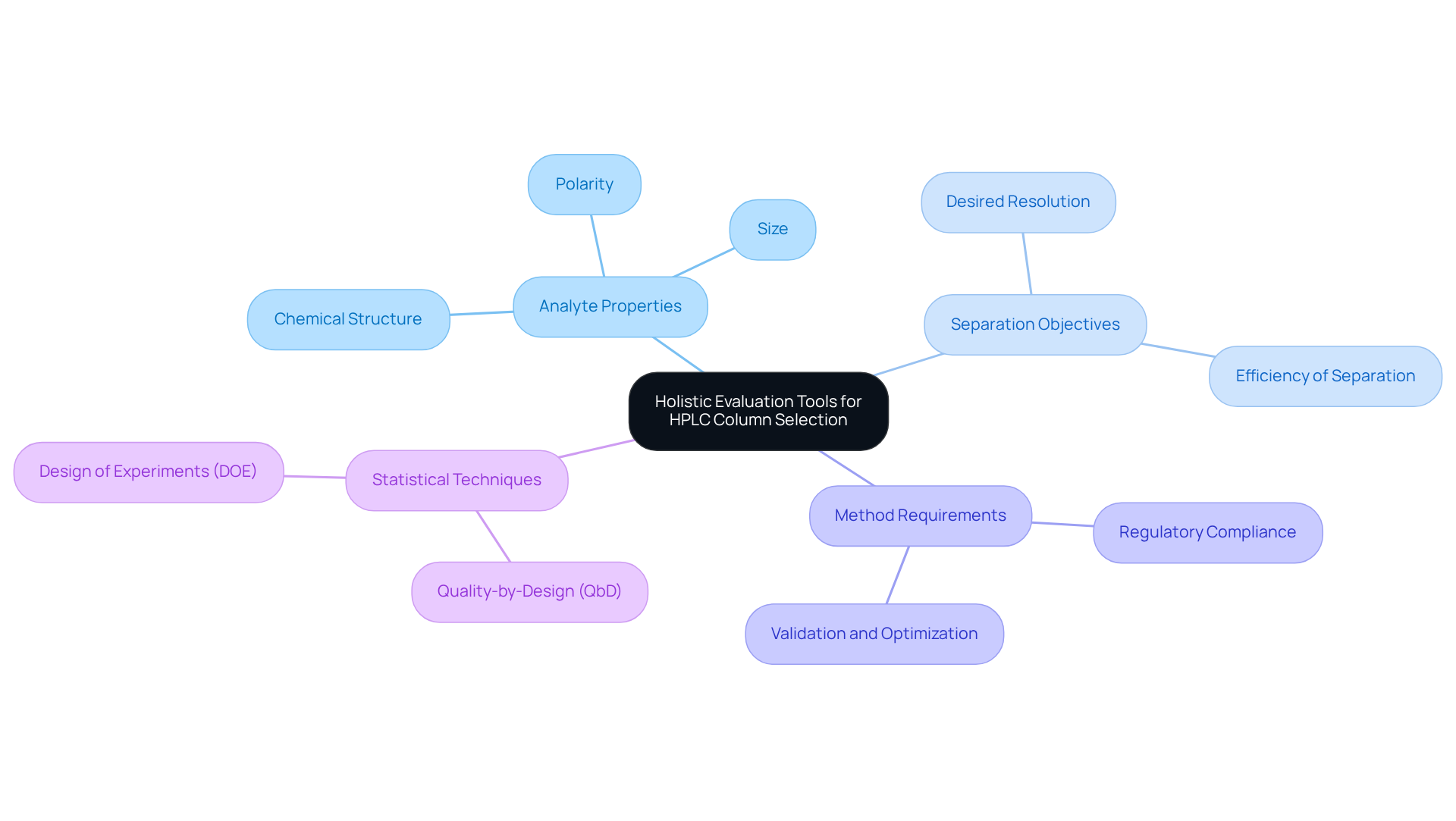
Greener Analytical Practices: The Role of HPLC Columns in Sustainability
The importance of analytical HPLC columns in promoting more sustainable testing methods is profound. By selecting structures designed to minimize solvent consumption and waste, facilities can significantly reduce their environmental footprint. Recent advancements in support technology, including the use of eco-friendly materials and designs, not only enhance sustainability but also ensure high performance in analysis with an analytical HPLC column. The transition to and sub-2-µm particles has demonstrated solvent savings exceeding 80%, underscoring a commitment to sustainable practices in research environments.
Environmental scientists emphasize that adopting such innovations is crucial for facilities aiming to align with sustainable practices, particularly in the use of an analytical HPLC column, as they foster a more responsible approach to analytical chemistry. Furthermore, integrating green chemistry education (GCE) and sustainable chemistry education (SCE) into laboratory training cultivates a culture of sustainability, encouraging professionals to reassess chromatographic techniques and explore alternatives like the C18-perfluorophenyl (PFP) phase for improved selectivity and efficiency.
As the industry progresses, the incorporation of these eco-friendly analytical HPLC columns by 2025 reflects an increasing acknowledgment of the necessity for sustainable solutions in scientific research.
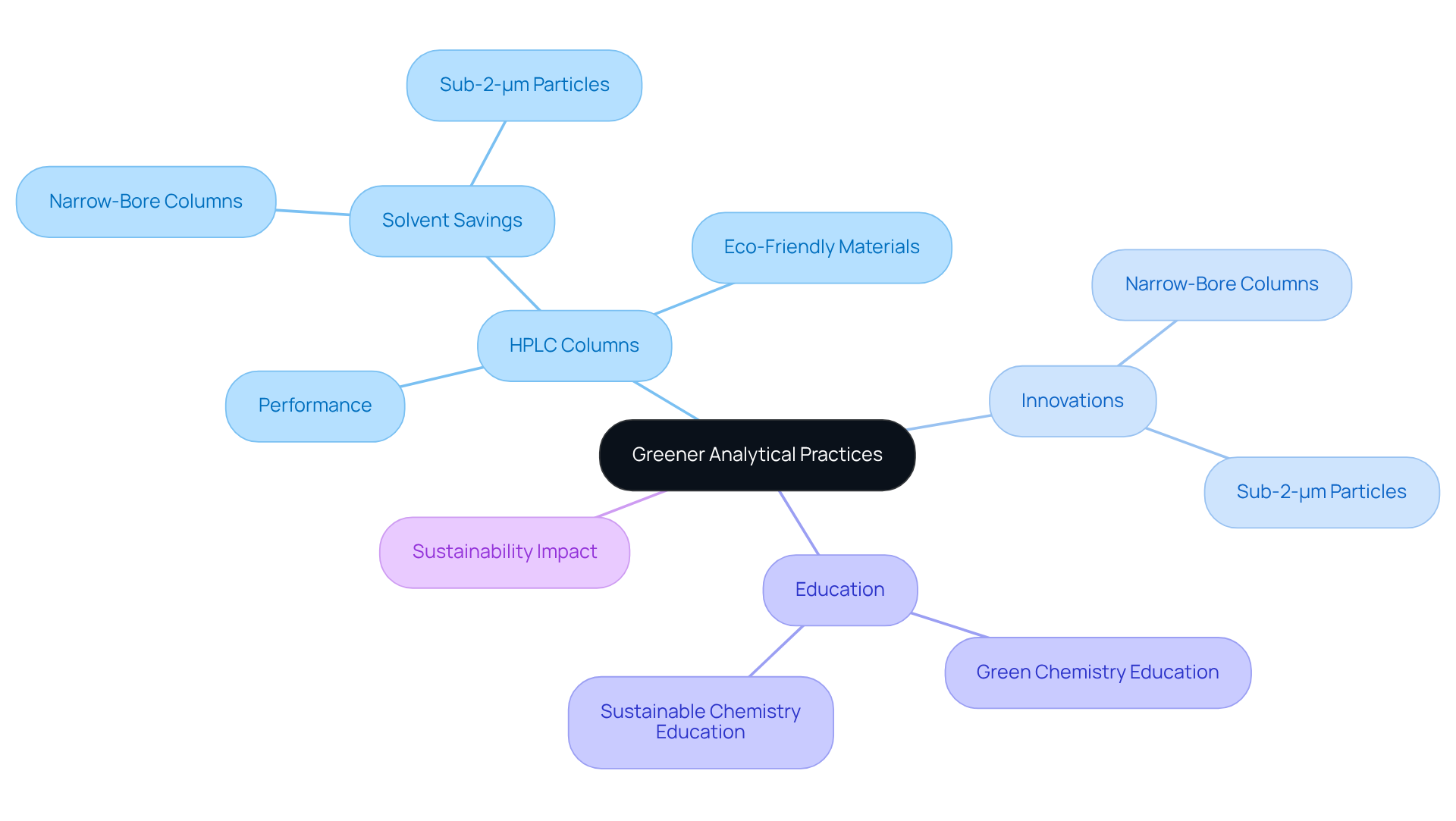
Conclusion
The exploration of analytical HPLC columns underscores their essential role in enhancing laboratory efficiency and accuracy. By integrating high-performance solutions, such as those provided by JM Science, Bio-Rad, Phenomenex, and others, laboratories can achieve significant advancements in their analytical processes. These columns not only enable precise separation and analysis but also bolster the overall productivity of research facilities, ensuring they remain at the forefront of scientific innovation.
Throughout the article, various HPLC columns have been highlighted for their distinctive advantages. For instance, the versatility of Phenomenex's offerings, the specialized design of Bio-Rad's Aminex columns tailored for carbohydrate analysis, and the customization options available from Hamilton all illustrate the importance of selecting the right column for specific applications. This careful selection ultimately leads to improved results and enhanced operational efficiency. Furthermore, the trend toward greener practices and cost-effective designs, including 3D-printed columns, reflects a significant shift toward sustainability in analytical chemistry.
As the analytical landscape continues to evolve, the importance of choosing the appropriate HPLC column cannot be overstated. Laboratories are urged to remain informed about advancements in technology and methodologies that can enhance their efficiency and accuracy. By embracing innovative solutions and prioritizing sustainable practices, research facilities not only enhance their analytical capabilities but also contribute to a more responsible approach to scientific inquiry. Adopting these advancements will ensure that laboratories are well-equipped to meet future challenges, ultimately fostering a culture of excellence in analytical chemistry.




